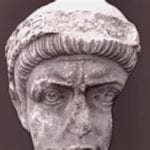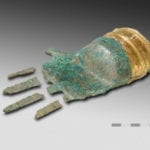 Music
Music  Music
Music  History
History 10 Less Than Jolly Events That Occurred on December 25
 Weird Stuff
Weird Stuff 10 Funny Ways That Researchers Overthink Christmas
 Politics
Politics 10 Political Scandals That Sent Crowds Into the Streets
 Weird Stuff
Weird Stuff Ten Bizarre Facts About The Doge Meme
 Our World
Our World 10 Ways Your Christmas Tree Is More Lit Than You Think
 Movies and TV
Movies and TV The 10 Coolest Stars to Set Sail on The Love Boat
 History
History 10 Things You Didn’t Know About the American National Anthem
 Technology
Technology Top 10 Everyday Tech Buzzwords That Hide a Darker Past
 Humans
Humans 10 Everyday Human Behaviors That Are Actually Survival Instincts
 Music
Music 10 Surprising Origin Stories of Your Favorite Holiday Songs
 History
History 10 Less Than Jolly Events That Occurred on December 25
 Weird Stuff
Weird Stuff 10 Funny Ways That Researchers Overthink Christmas
Who's Behind Listverse?

Jamie Frater
Head Editor
Jamie founded Listverse due to an insatiable desire to share fascinating, obscure, and bizarre facts. He has been a guest speaker on numerous national radio and television stations and is a five time published author.
More About Us Politics
Politics 10 Political Scandals That Sent Crowds Into the Streets
 Weird Stuff
Weird Stuff Ten Bizarre Facts About The Doge Meme
 Our World
Our World 10 Ways Your Christmas Tree Is More Lit Than You Think
 Movies and TV
Movies and TV The 10 Coolest Stars to Set Sail on The Love Boat
 History
History 10 Things You Didn’t Know About the American National Anthem
 Technology
Technology Top 10 Everyday Tech Buzzwords That Hide a Darker Past
 Humans
Humans 10 Everyday Human Behaviors That Are Actually Survival Instincts
10 Unusual And Fascinating Japanese Emperors
According to legend, the first emperor of Japan took the Chrysanthemum Throne in 660 BC. Since Emperor Jimmu’s ascension, some 126 emperors are counted to have ruled Japan, although some early emperors might have only been legendary figures.
Historically, the role of the emperor has alternated between being a public symbol and a powerful monarch. Some emperors had little influence over the country, while others proved to be tremendously important to Japanese history. For better or worse, the following emperors are remembered for the extraordinary personalities, intrigues, and acts of violence that marked their reigns.
10 Sudo
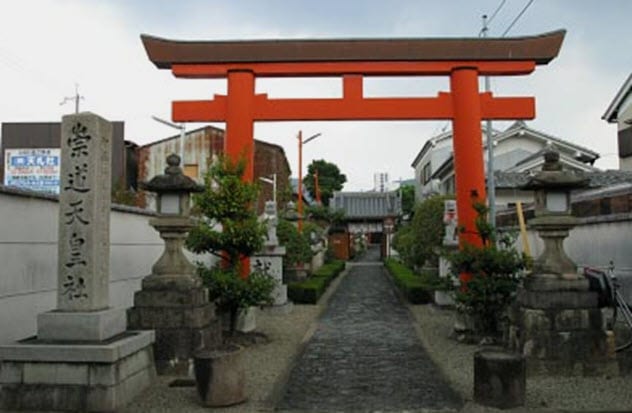
Emperor Sudo never served as emperor during his lifetime. In fact, he was only declared an emperor after he died. When he was alive, Sudo was known as Prince Sawara and his elder brother was Emperor Kanmu.
With his eyes on the throne, Sawara plotted the murder of one of his brother’s favorite officials, Fujiwara no Tanetsugu. In punishment, Kanmu executed and exiled Sawara’s coconspirators and sent his disgraced brother to live on distant Awaji Island.[1]
Prince Sawara died of starvation before he reached Awaji, but the trouble plaguing the emperor didn’t stop there. After Sawara’s death, the empress fell sick and died and Kanmu’s heir, Prince Ate, became ill as well. When offerings and prayers failed to help Prince Ate, Prince Sawara’s ghost was accused of haunting the imperial family. Anxiously, Kanmu set out to appease his brother’s spirit and built a temple in his honor.
In 800, afraid that Prince Sawara’s ghost was still hungry for revenge, Kanmu posthumously named him Emperor Sudo. The new, dead emperor was reburied in a spot that held the graves of many other emperors, and a shrine was built for him. Later, in 806, Kanmu formally forgave everybody involved in the death of Fujiwara no Tanetsugu, allowing the surviving conspirators to come back from exile.
9 Sushun

Ironically, Emperor Sushun had the fate of being assassinated by the very man who brought him to power. In 587, Sushun’s half-brother Emperor Yomei died and two powerful clans called the Mononobe and the Soga clashed over who would succeed him. Sushun’s other brother Prince Anahobe fought with the Mononobe but was eventually killed by the Soga and their leader, Soga no Umako.
Once the fight was settled, Umako decided to place Sushun on the throne as a compromise. However, Sushun was furious over the death of his brother and made no secret of his hatred for Umako. On one occasion, Sushun ordered a boar to be killed and then said, “I want the person I hate killed just as this boar has been killed.”[2]
Umako wasn’t thrilled over the emperor’s threats. He had a supporter assassinate Sushun and, after falling out with the assassin, hanged the man from a tree. At the time, Umako was so powerful that he didn’t suffer a single consequence for killing Sushun. Sushun’s nephew Prince Shotoku even claimed that his uncle deserved it, and Sushun was hastily buried without any of the usual imperial rituals.
8 Go-Daigo
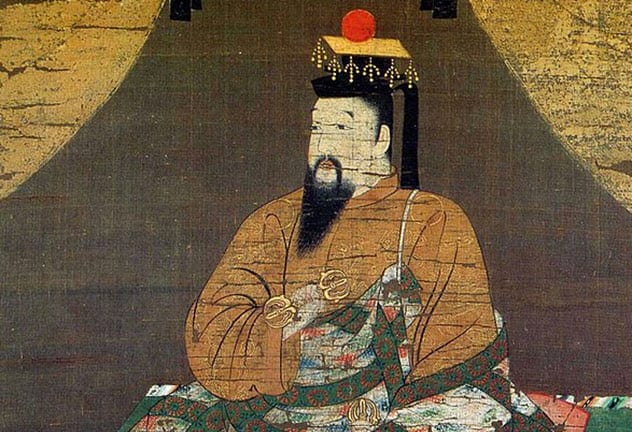
During Japan’s Kamakura period from 1185 to 1333, the country was controlled by military dictators called shoguns. Though the Japanese emperor continued to reign, the shogun was the real ruler of the country. In 1318, Emperor Go-Daigo took the throne, dreaming of restoring the kind of power his ancestors once held.
After a few mishaps, one of which forced the emperor off the throne and into exile, Go-Daigo and his allies launched a revolution and overthrew the government in 1333. For the next three years, as part of the Kenmu Restoration, Go-Daigo ruled again as emperor. His policies alienated his supporters though, especially the samurai.
By 1336, the Restoration was over and Go-Daigo was booted off the throne again. One of his old allies, Ashikaga Takauji, was appointed shogun in 1338, and the figure of the emperor was once more reduced to a figurehead.[3]
Still, even after being deposed twice, Go-Daigo refused to call it quits. Instead of accepting the new emperor’s legitimacy, Go-Daigo fled the capital of Kyoto and set up a new court in the town of Yoshino.
For the next six decades, Japan had two competing emperors—one side descended from Go-Daigo and the other side supported by the shogunate. Go-Daigo’s line was known as the Southern Court and lasted until 1392 when their last emperor abdicated and made peace with the shogunate.
7 Go-Komatsu
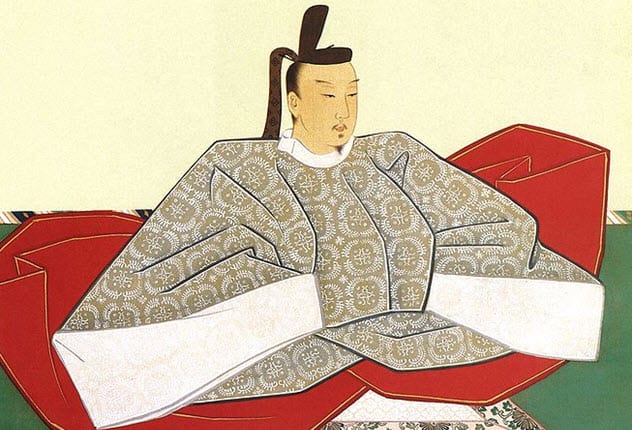
While Emperor Go-Daigo and his rebellious descendants made up the Southern Court, the Ashikaga shogunate gave their approval to a group of six emperors known as the Northern Court. Later scholars had their doubts about this line’s legitimacy, and since 1911, the Southern Court has been recognized as the legitimate line.
Technically, not all the Northern Court emperors are considered pretenders. Emperor Go-Komatsu, the last and sixth of the line, is countered as a genuine emperor.
Initially, after the last Southern Court emperor surrendered in 1392, a deal was struck so that somebody from that line would succeed Go-Komatsu. To satisfy both parties and to prevent one line from dominating the throne, the succession would alternate between the two different sides.[4]
While that was the deal, it was never actually honored. Emperor Go-Komatsu abdicated in 1412, and his son Shoko took his place instead. The Southern Court line ended up never taking power, and while they might be considered the legitimate line, subsequent Japanese emperors have been descended from the Northern Court.
6 Anko
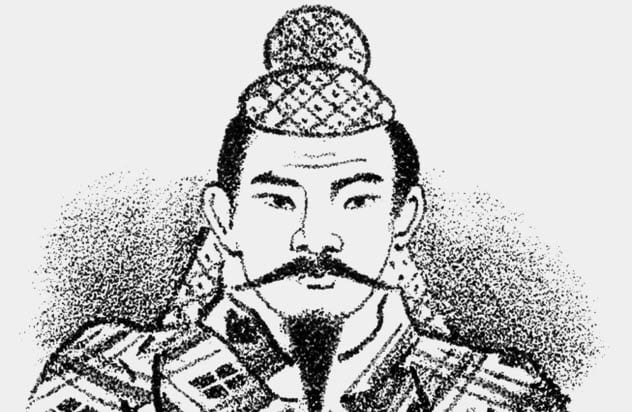
In the imperial Japanese system, the emperor’s oldest son was normally his heir. In the case of the Emperor Ingyo, who is believed to have died in 453, a romantic scandal cost his first son the throne.
The heir apparent, Prince Kinashi no Karu, fell in love with his half-sister and seduced her. The scandal soured the prince’s relations with the royal court, and after his father’s death, his younger brother Anaho challenged him for control. Unfortunately for Kinashi no Karu, he lost the fight, was banished, and later committed suicide.[5]
After taking the throne, Prince Anaho became known as Emperor Anko. With his succession built on violence, it might not be surprising that Anko’s life ended in bloodshed as well.
One day, Anko sent a messenger to his uncle Okusaka to propose a marriage for his younger brother. Okusaka agreed to the idea, but the messenger lied and told Anko that Okusaka had rejected it. Anko didn’t bother to double-check and angrily sent soldiers to murder Okusaka and kidnap his wife.
Anko made his aunt an empress and took in Okusaka’s seven-year-old son, Mayuwa. Anko was afraid that the boy might want revenge, and his suspicions ultimately proved right. While Anko was asleep in the empress’s lap, Mayuwa ambushed his stepfather and stabbed him to death with a sword.
5 Kobun
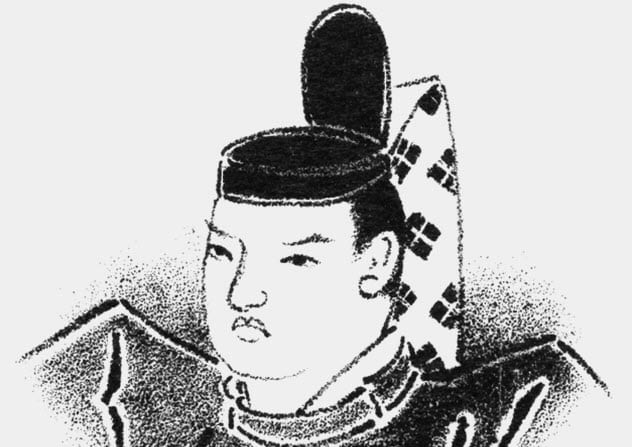
When he died in 672, Emperor Tenji was so highly regarded that the Japanese were still commemorating his reign with ceremonies a century later. Before his death, Tenji’s brother Prince Oama refused to succeed him, so his son Prince Otomo was appointed his successor and became Emperor Kobun.
It seemed like it would be a smooth transfer of power, but the rivalry between Oama and Kobun would engulf Japan in a succession crisis remembered as the Jinshin Disturbance.[6]
Prince Oama’s rejection of the throne turned out to be a ruse. As part of his plan, Oama moved from the imperial capital to a shrine in the town of Yoshino.
He claimed that he was going to live as a monk, but Oama was actually plotting a rebellion against his nephew. Allying himself with provincial leaders who resented Tenji’s centralization of the country, Oama gathered an army and launched an attack against Emperor Kobun.
The fighting proved to be short-lived, lasting only a month or so. Oama and his soldiers crushed the imperial army and burned down the capital. After ruling for only eight months, Kobun decided to strangle himself rather than face defeat.
His uncle succeeded him as Emperor Tenmu. Despite what his provincial allies signed up for, Tenmu ended up centralizing the government’s control even further.
4 Yozei
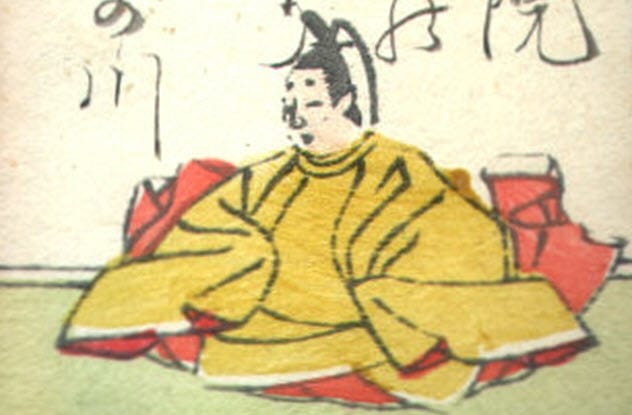
For the refined, sensitive court of the Heian period (794–1185), the wild Emperor Yozei must have been a nightmare. Yozei became emperor when he was only nine years old. By the time he was a teenager, he had developed some morbid ways to entertain himself. The young emperor delighted in animal cruelty, pitting dogs against monkeys and making snakes devour frogs.
Animals apparently weren’t the only source of his entertainment. Although details are vague, Yozei is reported to have once killed a courtier for no reason either with a sword or his own fists. The government kept the murder under wraps, but it wouldn’t be a surprise if this was the last straw for many of Yozei’s elders.
When the regent Fujiwara no Mototsune had had enough of Yozei’s bizarre behavior, he invited the emperor to a race. This was a trick. Fujiwara got him out of the palace and then promptly dismissed him from his duties.
The former emperor was considered insane, but he was never arrested or murdered after his disposal. In later life, Yozei took up poetry. His sole surviving poem is included in the Ogura Hyakunin Isshu, a famous anthology of Japanese poetry.[7]
3 Sutoku
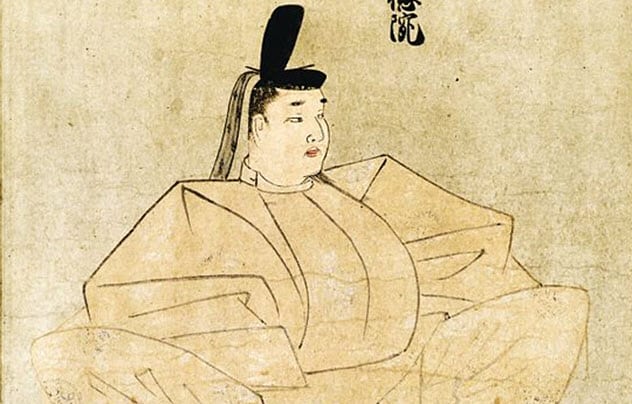
After reigning between 1123 and 1141 (some sources say 1142), Emperor Sutoku was unexpectedly booted off the throne by his own father and predecessor, Emperor Toba. Toba and his consort Fujiwara no Nariko had recently had a son, and the little boy was ordered to take Sutoku’s place. The new Emperor Konoe was a sickly child, and when he died in 1155, Sutoku thought he or his own son would be the successor.
In reality, Toba had no intention of giving the reins back to Sutoku and appointed another of Sutoku’s half-brothers as Emperor Go-Shirakawa. It was a controversial choice, and when Toba passed away the next year, there was nothing to stop Sutoku and his defenders from mounting a claim.
The resulting conflict, the Hogen Rebellion, ended in Go-Shirakawa’s favor. As punishment, Sutoku was forced into exile in the distant Sanuki Province.[8]
According to history, Sutoku died in 1164. Legend says that the former emperor took his bitterness to the grave, becoming a vengeful ghost or demon. Sutoku’s spirit was blamed for all sorts of disasters, and he remains a well-known figure in folklore today. In 1867, Emperor Meiji even wrote a letter to Sutoku, requesting that his spirit come to the capital as a form of forgiveness.
2 Kogyoku/Saimei
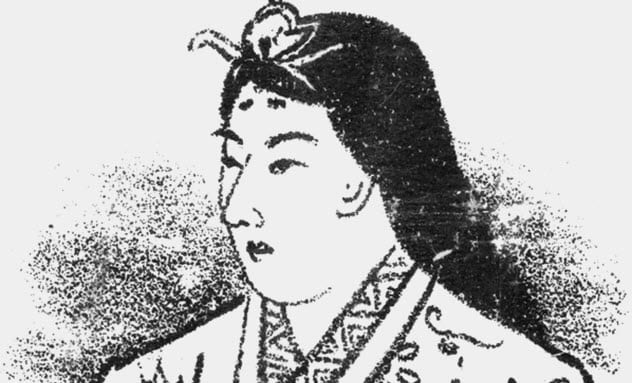
Like the later Empress Koken/Shotoku, Empress Kogyoku/Saimei had the rare distinction of ruling Japan during two separate periods. She was born Princess Takara, beginning her first reign as Empress Kogyoku after the death of her husband in 642. During this time, the Soga clan was becoming increasingly influential in the royal court, a development that Kogyoku’s son Prince Naka no Oe disliked.[9]
In July 645, Naka no Oe and a group of coconspirators ambushed a member of the Soga clan, Soga no Iruka no Omi. The attack was committed in front of Kogyoku, and when she left the room, Naka no Oe’s lackeys killed Iruka. After Iruka’s corpse was sent to his father, Emishi, the aggrieved man burned his house down and killed himself.
The assassination shocked Kogyoku so badly that she resigned. Her brother replaced her, ruling as Emperor Kotoku until his death in 654. Kogyoku then took power again, although the name Saimei refers to her second reign. After Saimei’s death, Prince Naka no Oe finally took the throne and became Emperor Tenji.
1 Antoku
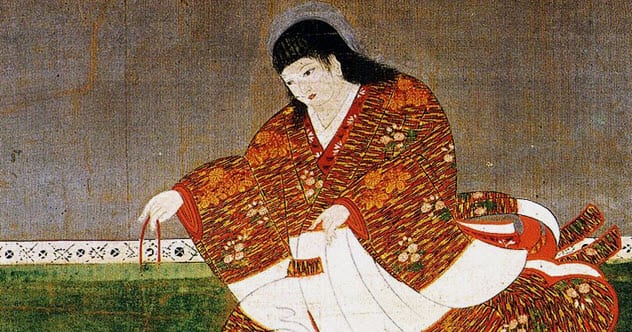
The story of Emperor Antoku is one of Japan’s greatest tragedies, immortalized in the classic epic poem The Tale of the Heike. Antoku became emperor at age two, with his grandfather Taira no Kiyomori acting as regent.
The Taira clan’s rival, the Minamotos, supported another boy for the throne. Their disagreement led to the Genpei War, a civil war between the Minamotos and Tairas that resulted in Antoku and the Tairas fleeing the capital of Kyoto.
Eventually, the Minamotos chased the Tairas to Dannoura, a port city located on the southern tip of Honshu. On April 24, 1185, the Minamotos and Tairas clashed for the last time, engaging in a sea battle. During the fight, the Taira general Taguchi Shigeyoshi cast aside his loyalties and joined the Minamotos. The battle became a hopeless ordeal; the general knew everything that the Taira forces planned to do.
Antoku was just one of the passengers on the Taira ships. When it became clear that the Minamotos had won, Antoku’s grandmother grabbed the boy and jumped overboard with him.[10]
Many of the other Tairas drowned themselves, choosing to die over surrendering. Since the Tairas’ defeat, folklore says that they haunt the sea as Heike crabs, a unique kind of Japanese crab that has a human face–like pattern on its shell.
Tristan Shaw is an American writer who enjoys folklore, literature, and history. You can follow him on Twitter.
Read more bizarre facts about the history of Japan on 10 Crazy Historic Facts About Japan and 10 Bizarre And Fascinating Facts About Life In Old Japan.
